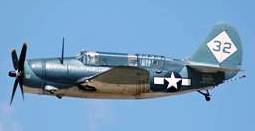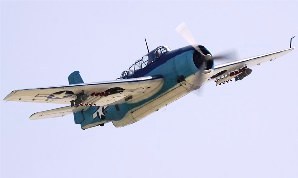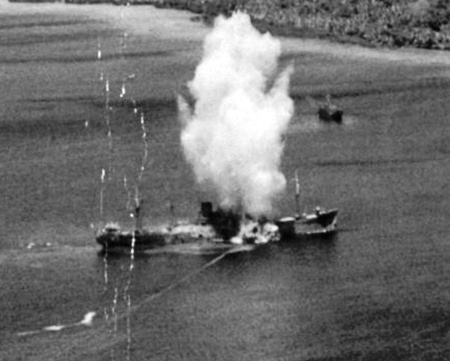ZATSUYOSEN!
 (AMAGISAN MARU prewar)
(AMAGISAN MARU prewar)
IJN AMAGISAN MARU:
Tabular Record of Movement
© 2012-2018 Gilbert Casse, Bob Hackett and Peter Cundall
Revision 6
22 February 1932:
Tama. Laid down by Mitsui Bussan K.K. Zosensho shipyard as a 7,623-ton refrigerated cargo ship for Mitsui Bussan K.K., Kobe.
6 November 1933:
Launched and named AMAGISAN MARU.
26 December 1933:
Completed and registered in Kobe. Her Gross Registered Tonnage (GRT) is 7,623-tons and her Net Registered Tonnage (NRT) is 4,713-tons. [1]
28 December 1933:
Departs Tama.
E December 1933 – January 1934:
Calls in the Philippines.
19 January 1934:
Arrives at Kobe.
27 January 1934:
Departs Yokohama. Placed on Mitsui Bussan’s New York commercial route (Yokohama ~ New York).
21 September 1935:
At 0750 departs San Pedro for Yokohama.
E 1936:
Her GRT and NRT are changed respectively to 7,620-tons and to 4,710-tons. [1]
E 1937 and 1938:
Calls at San Pedro, California.
E 1941:
Her NRT is changed respectively to 4,706-tons. [1]
28 September 1941:
Requisitioned by the IJN.
5 October 1941:
Registered in the IJN as an auxiliary transport (Ko) category under internal order No. 1194 and attached to the Maizuru Naval District with Maizuru as home port. Captain Suzuki Matayoshi is appointed CO. [2]
6 October 1941:
Maizuru. Starts her conversion to an auxiliary transport at the Navy Yard.
13 November 1941:
The conversion is completed.
E November 1941:
Tactically assigned to Vice Admiral (later Admiral) Tsukahara Nishizo’s (36) (former CO of carrier AKAGI) 11th Air Fleet, Supply Unit also consisting of auxiliary aircraft transports KAMOGAWA, KEIYO and LYONS MARUs, ammunition ship TATSUGAMI MARU and auxiliary transports NANA, NIKKOKU MARUs and HINO MARU No. 5.
1 December 1941:
Departs Takao, Formosa (now Kaohsiung, Taiwan) carrying troops of the Sakaguchi Detachment (56th Mixed Infantry Corps, 146th Infantry Regiment, 1st Field Artillery Battalion) for the forthcoming Invasion
of Davao Operation.
5 December 1941:
Arrives at Palau.
16-17 December 1941: The Occupation of Davao, Mindanao, Philippines:
The occupation of Davao is a combined IJN/IJA operation which involves Gen (later Field Marshal) Count Terauchi Hisachi’s command’s Southern Expeditionary Army. The 16th Army, under LtGen (later General) Imamura Hitoshi fields MajGen (later LtGen) Sakaguchi Shizuo's “Sakaguchi” Detachment of about 6,000 troops consisting of the 56th Inf Div's 56 Hq Company (Coy), 146th Inf Rgt, 2nd Btn of 56 Art Rgt with 12 75mm field guns, one tank Coy, one Eng Coy, one Transport Coy, one Signal unit platoon, 56th medical Unit, Field Hospital Unit and the “Miura” Detachment of about 1,200 troops of the 16th Inf Div's the 16 Inf Div’s Heavy weapons Coy of 33th Inf Rgt, 3rd Inf Bn and two Eng platoons of the 56th Inf Div. Two AA and one Signals Regiment are stationed on IJA transports.
The invasion units are embarked on eight IJA transports: HANKOW, HAVANA, HITERU, KANKO, KURETAKE, LIVERPOOL, TEIRYU (ex-German AUGSBURG) and YAMAZUKI MARUs.
The Navy force consists of Vice Admiral (later Admiral) Kondo Nobutake's (35)(former CO of KONGO) Southern Force, Philippines Invasion Group that includes Vice Admiral Takahashi Ibo’s (36)(former CO of YAMASHIRO) Third Fleet. Rear Admiral (later Vice Admiral) Irifune Naosaburo's (39) Invasion Unit consists of his 32st Special Base Force aboard TONAN MARU No 2, elements of 103rd Aerial Field Repair Shop and a detachment of 3rd Munitions Unit aboard KINUGASA MARU, a company of the No. 1 Kure Special Naval Force (SNLF) aboard AMAGISAN MARU, 2nd Construction Unit Rgt aboard TAITO MARU and 3rd Construction Unit Rgt aboard KOSHIN MARU.
The Davao Occupation Convoy departs Palau carrying the Sakaguchi Detachment (56th Mixed Infantry Corps, 146th Infantry Regiment, 1st Field Artillery Battalion), the Miura Detachment (part of the 16th Army Division) and the Kure No. 1 SNLF. The convoy is organized into three subdivisions:
1st subdivision: AMAGISAN (IJN) (carrying the Kure No. 1 SLNF), YAMATSUKI (IJA), TAITO (IJN), KINUGASA (IJN) and KIRISHIMA (IJN) MARUs.
2nd subdivision: TONAN MARU No. 2 (IJN), TEIRYU (ex German AUGSBURG) ((IJA), KURETAKE (IJA) and TENRYU (IJN) MARUs escorted by minelayer SHIRATAKA and destroyers AMATSUKAZE and OYASHIO.
3rd subdivision: HANKOW (IJA), HAVANA (IJA), TATSUKAMI (IJN), EIKO (IJN) and KOSHIN (IJN) MARUs.
16 December 1941:
At 1600, the 3rd subdivision departs Palau.
17 December 1941:
At 0700, the 2nd subdivision departs Palau.
17 December 1941:
At 1300, the 1st subdivision departs Palau.
20 December 1941:
At 0145, the 1st subdivision arrives at Tibungko Anchorage (15 km NNE of Davao). At 0320, the 3rd subdivision arrives at Talomo Anchorage (6 km SW of Davao). At 0440, the 2nd subdivision arrives at Tibungko Anchorage. After the landings AMAGISAN MARU remains at Davao for the rest of the month.
8 January 1942:
Departs Davao for Magnaga Bay.
9 January 1942: Operation "H" - The Invasion of Celebes, Netherlands East Indies:
The invasion convoy unit consists of eight IJN transports: AMAGISAN, NANKAI, HOKUROKU, KATSURAGI, SHOKA, KOSHIN, CHOWA and KINAI MARUs, carrying Captain (later Vice Admiral) Mori Kunizo's (40) (former CO of SATA) Sasebo No. 1 and 2 Combined SNLF of about 2,500 men. The transports are accompanied by supply ships SHINKO (545 GRT) and OHA MARU (future IJN KURESAKI).
The convoy is escorted by MineSweepDiv 21's W-7, W-8, W-9, W-11 and W-12 in Rear Admiral (later Vice Admiral) Kubo Kyuji's (38)'s 1st Base Force with light cruiser NAGARA, SubChasDiv 1's CH-1, CH-2 and CH-3 and patrol boats PB-1, PB-2, PB-34. \
NE Davao Gulf, Mindanao, Philippines. The convoy is assembled in Magnaga Bay in two echelons:
At 0100, the first echelon departs consisting of SHOKA, KOSHIN and CHOWA MARUs accompanied by SHINKO and OHA MARUs at nine knots speed of advance.
At 1000, the second echelon departs consisting of AMAGISAN, KINAI, NANKAI, HOKUROKU, and KATSURAGI MARUs at 12 knots speed of advance.
11 January 1942:
At 0110, the Menado occupation force of AMAGISAN, KINAI, NANKAI, SHOKA, KOSHIN and CHOWA MARUs arrives at No. 1 landing operation floating anchorage (Menado Roadstead) and prepares for landing troops N and S of Menado port. At 0315, the first landing forces depart transports and land at 0400. NE coast of Minahasa Peninsula (SE of Menado). At 0130, the Kema occupation force consisting of HOKUROKU and KATSURAGI MARUs arrives at No. 1 landing operation floating anchorage (small port of Kema Roadstead) at 0130. At 0345, the first landing troops depart the transports and land at 0420. Later, 334 men of Cdr (later Captain) Horiuchi Toyoaki's (later XO of TAKAO) Yokosuka No. 1 SNLF (Air) are dropped successfully from Mitsubishi G3M1-L Nell converted transport aircraft in the Menado-Kema area. The paratroops seize Langoan airfield. At 1540, AMAGISAN MARU receives slight damage by a near miss during an attack by three Dutch aircraft.
27 January 1942:
At 1330 PB-1 departs Kendari escorting AMAGISAN, NANKAI, HOKUROKU, and KINAI MARUs.
29 January 1942:
At 0445 the convoy arrives back at Banka.
14 February 1942:
Off Davao, Philippines. AMAGISAN MARU is torpedoed and hit by LtCdr (later Rear Admiral) Chester C. Smith’s (USNA ’25) USS SWORDFISH (SS-193) at 06-45N, 126-54E. Damaged and taking water by the stern, the transports briefly stops but is later able to head for Pujada Bay.
23 February 1942:
Davao. Auxiliary rescue and salvage ship YUSHO MARU engages in life saving service for AMAGISAN MARU.
E February 1942:
Undergoes emergency repairs.
1 March 1942:
Tactically assigned to supply Air Force Southern troops.
5 March 1942:
Assigned to a supply convoy mission for Air Force Southern troops but still under repair.
10 April 1942:
Assigned to transport an air force base unit but still under repair at Davao.
2 May 1942:
AMAGISAN MARU is scheduled to be fitted with optical devices such as telescope and stadimeter and their related spare parts, under Navy’s secret instruction No. 5289.
27 June 1942:
Davao. Emergency repairs are finally completed by repair ship YAMABIKO MARU.
1 July 1942:
At 1100 departs Davao escorted by auxiliary subchaser KYO MARU No. 13.
2 July 1942:
Auxiliary transport (ex Seaplane tender) SANUKI MARU joins AMAGISAN MARU. At midnight, KYO MARU No. 13 ends her escort and is replaced by auxiliary netlayer TOKO MARU No. 1 GO.
3 July 1942:
Escorted through Surigao Strait by auxiliary netlayer TOKO MARU No. 1 GO. At 0850, SANUKI MARU is detached and heads to Japan. Later, arrives at Manila.
E July 1942:
Departs Manila.
15 July 1942:
Arrives at Mako, Pescadores. Undergoes other emergency repairs.
22 July 1942:
Departs Mako for Moji.
27 July 1942:
Arrives at Moji. Departs later for Tama.
28 July 1942:
Arrives at Tama. Enters dock at Mitsui Bussan K.K. Zosensho shipyard for extensive repairs.
1 October 1942:
Still under repair. Currently assigned to South East Forces supply unit.
28 December 1942:
Her owners are restyled to Mitsui Senpaku K.K. and her registry port to Tokyo.
15 February 1943:
Captain Sato Bunkichi (36) (former CO of SENKO MARU) is posted CO.
18 February 1943:
Extensive repairs are completed. Undocked.
19 February 1943:
Departs Tama and arrives later in the day at Tokuyama.
E 20-24 February 1943:
Probably loads fuel.
25 February 1943:
Departs Tokuyama.
27 February 1943:
At 1515, arrives at Yokosuka.
9 March 1943:
At 1100, departs Yokosuka.
17 March 1943:
Arrives at Roi.
21 March 1943:
Departs Roi.
22 March 1943:
At 0800 departs Kwajalein escorted by destroyer KIYONAMI.
25 March 1943:
At 1900 arrives at Truk. Provided with an air escort prior to arrival.
31 March 1943:
That morning departs Truk for Rabaul.
E April 1943:
Arrives at Rabaul, New Britain.
23 April 1943:
At 1000 departs Rabaul for Truk, Central Carolines in a convoy also consisting of KIKUKAWA and TENYO MARUs escorted by destroyer ONAMI and submarine chaser CH-10.
27 April 1943:
At 0930 arrives at Truk.
2 May 1943:
Departs Truk for Yokosuka in convoy No. 4502 also consisting of KIKUKAWA MARU and possibly others with unknown escort.
12 May 1943:
Arrives at Yokosuka. Transfers later to Yokohama.
18 May 1943:
Departs Yokohama.
23 May 1943:
Arrives at Tokyo.
28 May 1943:
At 0130 departs Yokohama in convoy No. 7528A also consisting of SANSEI MARU (2386 gt) escorted by patrol boat PB-101. Later that day arrives at Nagoya, Aichi Prefecture.
31 May 1943:
At 1400 departs Nagoya for Yokosuka escorted by auxiliary submarine chaser CHa-19.
1 June 1943:
Arrives at Yokosuka.
7 June 1943:
Departs Yokosuka for Truk in convoy No. 3607 also consisting of auxiliary aircraft transport FUJIKAWA MARU, auxiliary transport CHIHAYA MARU (ex-Dutch TJISAROEA) and other unidentified ships with an unknown escort.
10 June 1943:
SSE of Ogasawara Gunto (Bonins). In a submerged daylight attack, Cdr (later Vice Admiral) Frank T. Watkins' (USNA ’22) USS FLYING FISH (SS-229) fires three torpedoes at FUJIKAWA MARU at 24-55N, 145-36E, but the attack is unsuccessful.
15 June 1943:
Arrives at Truk.
17 August 1943:
Off Balikpapan, Borneo. Bombed and lightly damaged by Boeing B-17s.
20 August 1943:
At 0900, departs Balikpapan for Palau in convoy No. 2606 also consisting of fleet oiler TSURUMI and IJA transports NICHIAI and YAMAYURI MARUs escorted by subchasers CH-4 and CH-5.
23 August 1943:
YAMAYURI MARU and CH-5 are detached for Menado and then NICHIAI MARU is detached.
E 25 August 1943:
Departs Menado in the convoy still consisting of Naval oiler TSURUMI, IJN transports AMAGISAN and IJA transport NICHIAI MARU escorted by subchaser CH-4.
26 August 1943:
Off Palau. LtCdr (later Cdr) John A. Scott's (USNA ’28) TUNNY (SS-282) unsuccessfully attacks the convoy now only consisting of auxiliary transport AMAGISAN MARU and fleet oiler TSURUMI escorted by CH-4 at 07-30N, 134-20E. CH-4 depth charges and damages USS TUNNY. Scott is forced to terminate his patrol.
E 27 August 1943:
Arrives at Palau. Probably undergoes emergency repairs.
4 September 1943:
Departs Palau for Rabaul in convoy N-404 also consisting of IJA landing craft depot ship MAYASAN MARU, IJA transport KANSAI MARU and auxiliary transport KINUGASA MARU escorted by subchasers CH-16 and
CH-38.
9 September 1943:
AMAGISAN and KINUGASA MARUs are detached from the convoy and arrive at Rabaul.
E September 1943:
Captain Suzuki is relieved by civilian captain Kurosaka as CO.
1 October 1943:
Reclassified as an auxiliary transport (Otsu) category. [2]
5 October 1943:
Departs Rabaul in convoy No. 2052 as only merchant ship escorted by torpedo boat HIYODORI and subchaser CH-28.
8 October 1943:
About 100 nm SSE of Truk. LtCdr Robert J.Foley’s (USNA ’27) USS GATO (SS-212) intercepts the convoy. At 1300, he torpedoes and scores on hit on AMAGISAN MARU at 05-34N, 152-10E. The vessel is hit in her No.6
hold but the Mark-14 torpedo is a dud and only causes some light damage by flooding. CH-28 remains behind to conduct an ASW sweep. AMAGISAN MARU, still escorted by HIYODORI, resumes her course to Truk.
9 October 1943:
At 0900, arrives at Truk. Departs later for Saipan.
14 October 1943:
Arrives at Saipan. The ship is met off Saipan by auxiliary minesweeper FUMI MARU No. 2. Departs Saipan with destroyer HIBIKI as escort and returns back that same day.
15 October 1943:
At 0620 departs Saipan with auxiliary minesweepers FUMI MARU No. 2 and SEKI MARU No. 3 as escorts and returns back that same day.
17 October 1943:
At 0750 departs Saipan with destroyer HIBIKI as escort.
E October 1943:
Arrives at Singapore.
2 November 1943:
Departs Singapore in convoy also consisting of auxiliary transports SANUKI (ex-seaplane tender) and NANKAI MARUs escorted by destroyer HIBIKI.
4 November 1943:
NANKAI MARU is detached and heads to Surabaya, Java.
6 November 1943:
Arrives at Batan Island, Luzon.
17 November 1943:
Due to depart Padang for Singapore.
21 November 1943:
Due to arrive in Singapore.
5 December 1943:
At 0500 departs Kau, Halmahera Island in a convoy also consisting of TATSUHARU and KOAN MARUs escorted by auxiliary sub-chaser SHONAN MARU No.17.
7 December 1943:
Arrives at Ambon, Moluccas.
11 December 1943:
Departs Ambon still in the same convoy.
13 December 1943:
Arrives at Wasile, Halmahera Island, Moluccas.
17 December 1943:
Departs Wasile still in the same convoy.
19 December 1943:
Arrives at Ambon.
27 December 1943:
At 0800, departs Balikpapan with HAKUBASAN MARU.
1 January 1944:
Arrives at Singapore.
13 January 1944:
Departs Singapore.
18 January 1944:
Arrives at Balikpapan.
1 February 1944:
AMAGISAN MARU is confirmed as an auxiliary transport, (Otsu) category, attached to the Maizuru Naval District and assigned to the Department of the Navy. [2]
3 February 1944:
At 1058, transporting avgas in drums, departs Balikpapan in a convoy also consisting of auxiliary oilers FUJISAN and SHINKOKU MARUs. Escort is provided by destroyers SHIGURE and HARUSAME.
10 February 1944:
The convoy arrives at Ulithi anchorage, Carolines.
11 February 1944:
At 1200, the convoy departs Ulithi for Truk.
14 February 1944:
Arrives at Truk. That same day transfers part of the avgas drums and 733 Air Force personnel to auxiliary transport KOSHIN (6530 GRT) MARU.
17 February 1944: American Operation "Hailstone" - The Attack on Truk:
Beginning at dawn, Vice Admiral (later Admiral) Marc A. Mitscher’s (USNA ’10) Task Force 58's five fleet carriers and four light carriers, supported by six battleships, ten cruisers and 28 destroyers, launch air attacks on airfields, shore installations and ships in the lagoon. Mitscher launches 30
strikes of at least 150 aircraft each. The strikes are launched about every hour.

 (Curtiss SB2C “Helldiver” and Grumman TBF “Avenger”- 1944
markings)
Truk Atoll. AMAGISAN MARU is anchored SW of Uman Island. At 1250, five VB-17 Curtiss SB2C-3 “Helldiver” dive- bombers and four VT-17Grumman TBF-1C “Avenger” torpedo-bombers from USS BUNKER HILL (CV-17) target the transport. Hit by a 1,000 lbs bomb aft and by a torpedo on her front starboard side, she sinks rapidly at 07-18N, 151-53E with the loss of three crewmen.
(Curtiss SB2C “Helldiver” and Grumman TBF “Avenger”- 1944
markings)
Truk Atoll. AMAGISAN MARU is anchored SW of Uman Island. At 1250, five VB-17 Curtiss SB2C-3 “Helldiver” dive- bombers and four VT-17Grumman TBF-1C “Avenger” torpedo-bombers from USS BUNKER HILL (CV-17) target the transport. Hit by a 1,000 lbs bomb aft and by a torpedo on her front starboard side, she sinks rapidly at 07-18N, 151-53E with the loss of three crewmen.
 (AMAGISAN MARU hit by a torpedo”)
18 February 1944:
(AMAGISAN MARU hit by a torpedo”)
18 February 1944:
In two days of raids, Task Force 58 sinks 31 transports and 10 naval vessels (two cruisers, four destroyers and four auxiliary vessels, destroys nearly 200 aircraft and damages severely about 100 more. Truk is eliminated as a major fleet anchorage for the IJN.
31 March 1944:
Removed from the Navy’s list under internal order No. 508.
Postwar:
Located at a major diving site, the wreck is lying at a 45° list to the port side. The holds contain aircraft spares, bikes, trucks and some avgas drums. Her bow deck gun is still intact.
Authors Notes:
[1] NRT is a ship's cargo volume capacity expressed in "register tons", one of which equals to a volume of 100 cubic feet (2.83 m3). It is calculated by subtracting non-revenue-earning spaces i.e. spaces not available for carrying cargo, for example engine rooms, fuel tanks and crew quarters, from the ship's gross register tonnage (GRT). Net register tonnage (NRT) is not a measure of the weight of the ship or its cargo, and should not be confused with terms such as deadweight tonnage or displacement.
[2] There were two categories of Zatsuyosen. (Ko) category with an IJN Captain as supervisor aboard and (Otsu) category without.
Thanks go to Gengoro S. Toda of Japan, Matthew Jones of Mississippi, USA and the late Mr. John Whitfield of USA.
-Gilbert Casse, Bob Hackett and Peter Cundall
Back to
IJN Transports Page








